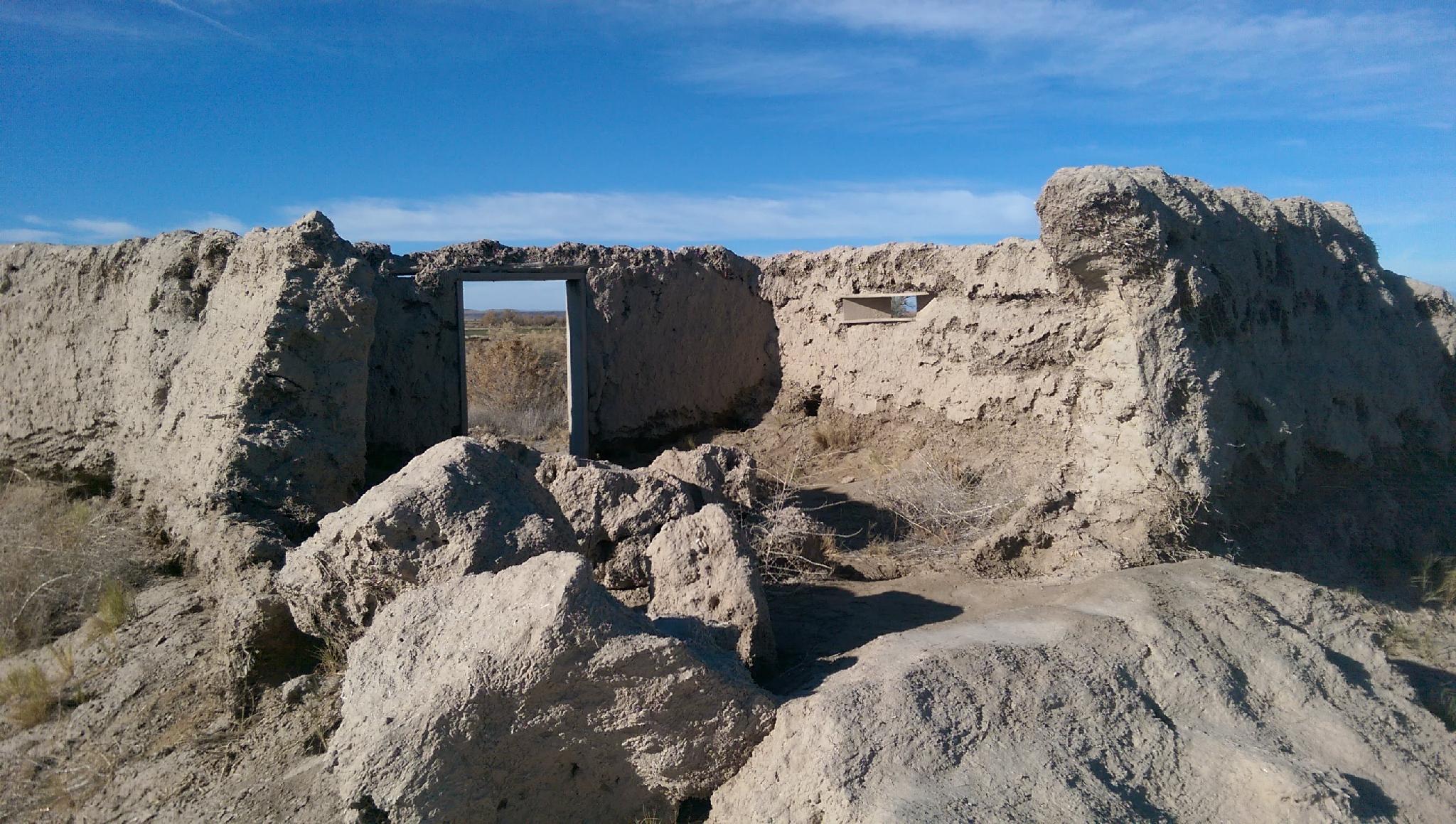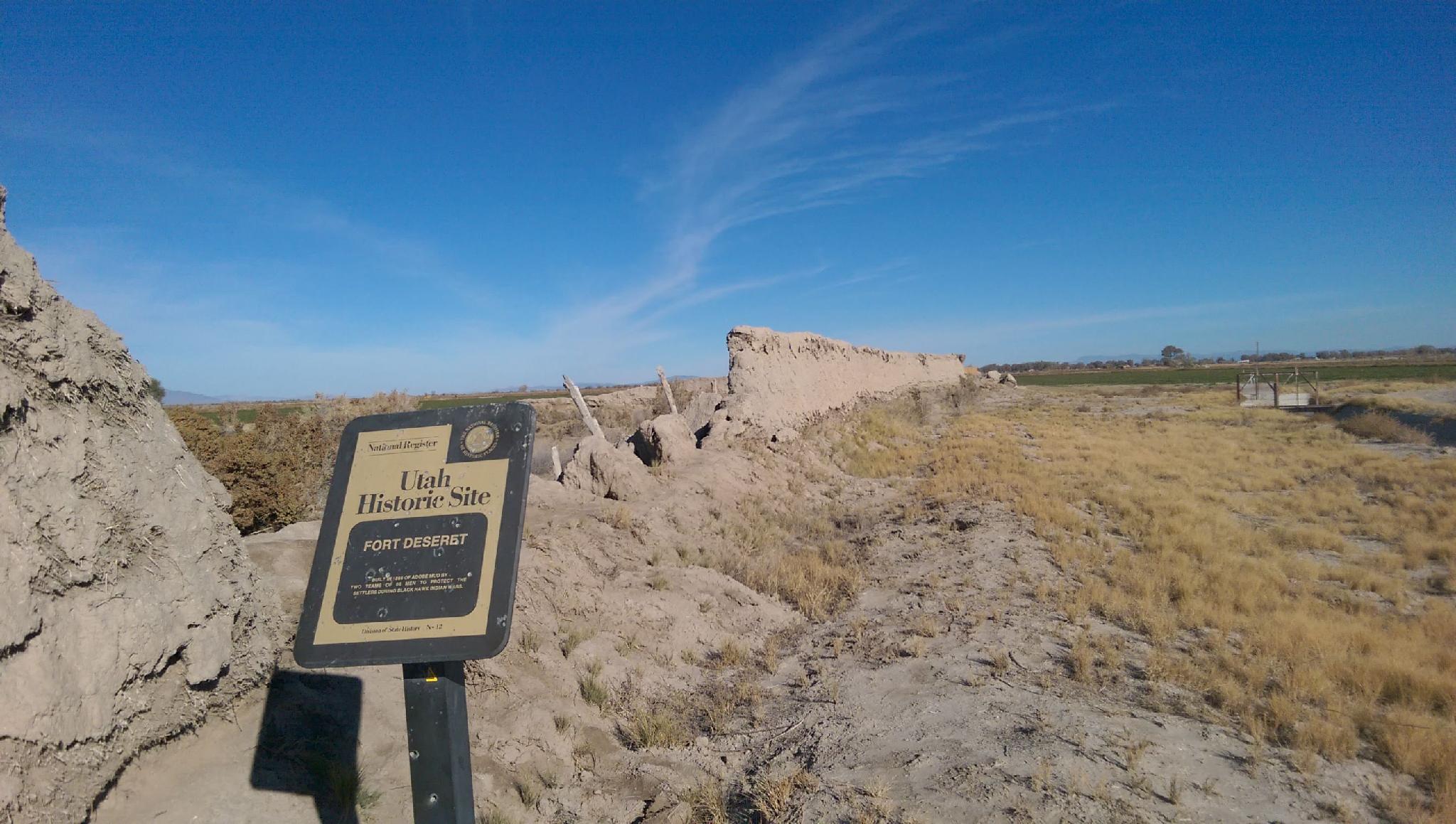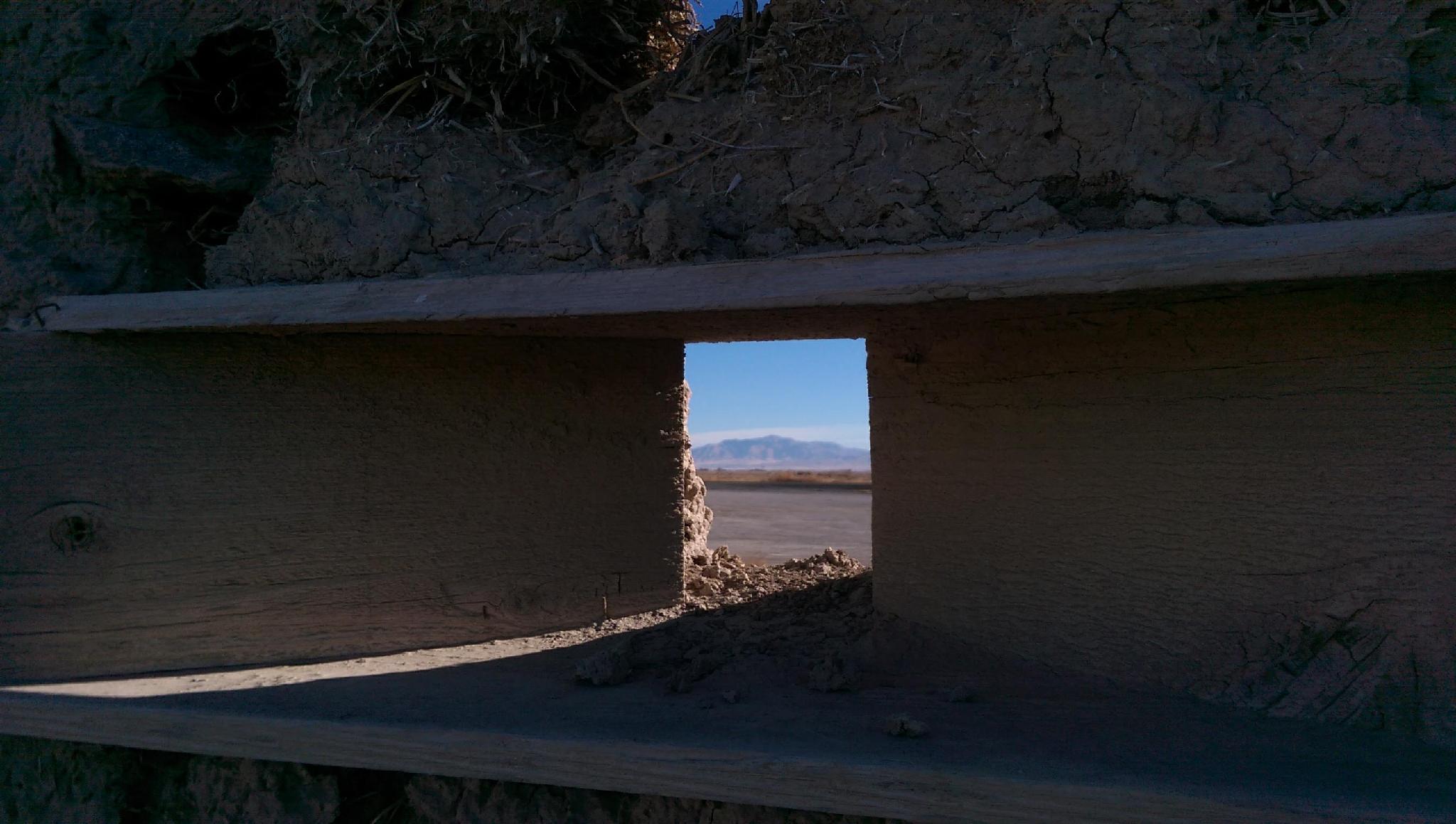 Roadside Attraction Fort Deseret
Roadside Attraction Fort Deseret
Delta
Overview
|
Thu 47 | 16 |
Fri 48 | 19 |
Sat 40 | 13 |
Sun 43 | 5 |
Mon 46 | 11 |
| View Full Weather Details | ||||
|
Thu 47 | 16 |
Fri 48 | 19 |
Sat 40 | 13 |
Sun 43 | 5 |
Mon 46 | 11 |
| View Full Weather Details | ||||
Fort Deseret was built in 1865 by Mormon settlers to provide protection during the Black Hawk War, which was the longest and most destructive conflict between pioneers and Native Americans in Utah history. The fort is credited with helping local settlers come to a peaceful resolution in 1866 when Black Hawk appeared and demanded cattle. The fort provided a defensive position for the local settlers.
When it was originally built ,the mud and straw walls were about 10 feet high and contained a 550 square foot internal protected area. Incredibly, the fort was built in just 18 days with 98 men and an unknown number of oxen that mixed the mud and straw with their feet. When complete, the base of the walls were about 3 feet thick and tapered to about 1.5 feet at the top.
The fact that several large sections of wall stand today, despite being over 100 years old and made of mud and straw, is a testament to the hard work of the men and oxen and to the stone foundation the walls were built on.
A highly recommended stop if you are in the Delta area.
Black Hawk War
The Black Hawk war started in 1865 when a meeting between Mormon pioneers and Utes to settle a dispute about cattle rustling went array. A inebriated Mormon jerked a young chieftain from his horse and the Ute delegation left angrily. A young Ute named Black Hawk and other Utes killed five Mormons in retribution and escaped with hundreds of cattle. Black Hawk’s success attracted the interest of other Native Americans and he united some factions of the Ute, Paiute, and Navajo tribes into a very loose confederacy intent on stealing cows. Over 2000 head of stock and possibly as many as seventy white settlers were killed during the conflict. Latter-day Saints built forts and deserted dozens of settlements for protection during this time. They also chased after the perpetrators with little success and sometimes indiscriminately killed Native Americas, including women and children, without cause. Black Hawk made peace with the Mormons in 1867 and a broader treaty as signed in 1868, though intermittent raiding and killing continued until 1872, when federal troops stepped in.
Getting There
From Delta, head west on US-50 toward Ely, NV. About 5 miles from downtown Delta, turn left (south) on UT-257. Follow this for about 4.5 miles to mile post 64.7. The fort is on the right (west) side of the road.
Route
There is a picnic table in the parking area. Please don't climb on the walls so preserve .them for another 100 years



